#Russian navy submarines
Text
Yo who wants to buy a complete Russian submarine escape suit manufactured in 2012 with the under suit and repair kit I don't know why I disided to buy this but I've had it for about 2 years and I've disided I'm probably gonna sell it so I guess if you want it for whatever reason I'll give you the ebay link once I list it its also lined with kevlar and balconies rubber it doesn't come with the rebreather tho but to be fair that shit will get you killed but it does have a regulator adapter so if you wanna use it for diving you can it also has the weighted boots but I forgot to take a pick and I need to sell it to get money for night vision



#gas masks#diving gear#diving equipment#Russian surplus#Russian military diving#Russian navy#submarines#Russian navy submarines#CBRN#commercial diving#commercial diving gear#Russian gas mask#ussr gas masks#Soviet submarines#surplus for sale#tactical gear#millitary surplus#hazmat suit#hazmat#submarine escape suit#deep sea diving#old diving gear#antique diving suit#diving helmet#Russian diver#SCBA
10 notes
·
View notes
Text

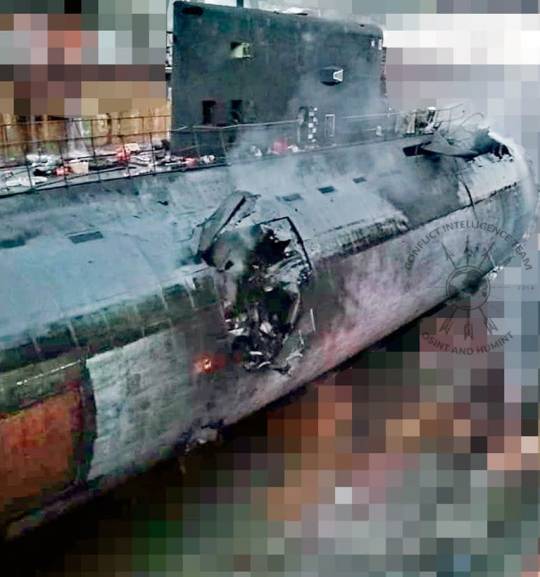
Russian Submarine Destroyed
The significant damage sustained by a Russian Navy Kilo class diesel-electric attack submarine after a Ukrainian cruise missile strike last week. The Kilo class boat, together with a Ropucha class landing ship, had been in dry dock in the Black Sea port of Sevastopol, in Russian-occupied Crimea, when it came under attack in the early hour of September 13.
The submarine in question is the Rostov-on-Don (B-237), an Improved Kilo boat, from the Project 636.3 class, which is capable of launching Kalibr land attack cruise missiles, of the type widely used against targets in Ukraine. This submarine entered service in 2014 and is one of four of its type with the Black Sea Fleet.

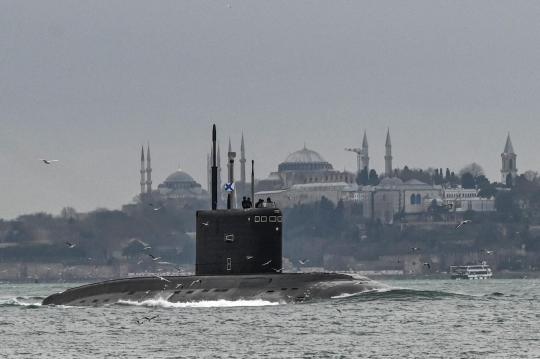
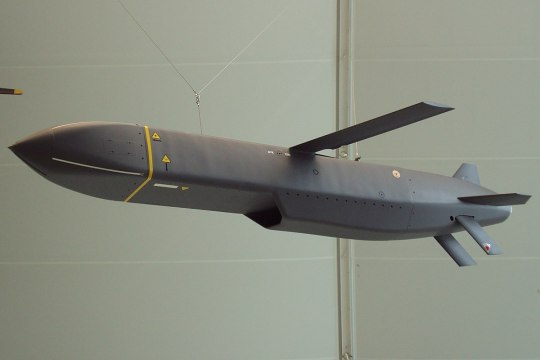
#ukraine#russia#russian war on ukraine#crimea#Black Sea port of Sevastopol#submarine#russian submarine destroyed#Russian Navy Kilo class diesel-electric attack submarine#Rostov-on-Don (B-237)#cruise missile strike#storm shadow#war#world at war#weapons#battle#fighting#combat
45 notes
·
View notes
Text

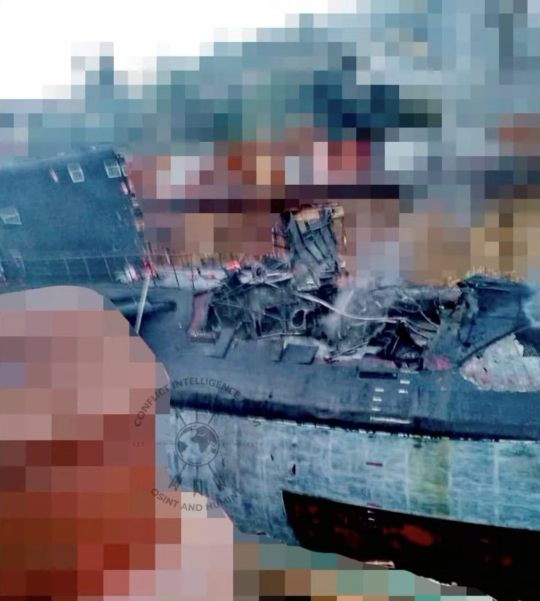
Kilo-class submarine made 2014 called "Rostov-na-Donu" after the Storm Shadow attack in Sevastopol dry-dock, 13/09/2023
It's just a scratch!
#russian navy#black sea fleet#sevastopol#rostov-na-donu#kilo-class#submarine#russo ukrainian war#fuck russia#slava ukraini
0 notes
Video
youtube
HAVING DAMAGED!! Russian Navy Submarine Novorossiysk to Undergo Repair i...
#youtube#HAVING DAMAGED!! Russian Navy Submarine Novorossiysk to Undergo Repair in 2023. Wednesday 26-10-2022. According to information published by
0 notes
Text
«Шведский комсомолец»
27 октября 1981 года вблизи шведской базы Карлскруна села на мель советская подводная лодка C-363, прозванная «шведским комсомольцем». Читайте как это было!

0 notes
Text
Saab's "top-secret" stealth program, Flygsystem 2020

The Swedish government is currently working on a "secret" stealth fighter program. Saab's stealth program Flygsystem 2020 is classified as top secret. Sweden is rumored to be developing a top-secret stealth project, but so far, we know very little about it.
#swedishairforce#swedishfighterjet#swedishsaabjas39gripen#swedish#saab’ssecretstealthprogram#flygsystem2020#secrettestsofthestealthfighterjet#stealthfighterjet#cars#fighter jet#nato#natolesims#royal navy scrambles submarine hunter warship to intercept russian vessels in north sea as putin taunts nato#nato expansion#natok#business
0 notes
Text
whilst I am sick in bed, I want to put something out here before things start getting wild with conspiracy theories about this whole submersible debacle. because I think we will start seeing a lot of conspiracy theories starting up. some irrational, but some rational!
also note that I have no educated experience on these matters, just 33 years of living and a special interest in both the titanic and maritime disasters. so take everything with a grain of salt(water).
and while yes, if they’re dead, I genuinely think every navy and coast guard already knows and has known since like the first three hours since the sub went missing, I also genuinely do not think this was out of malicious or subversive intent, or trying to hide some big secret, and I will explain why:
underwater explosions/implosions make a very characteristic sound. this is called a bubble pulse: multiple booms being the result of initial explosion, followed by water pressure collapsing the gas bubble.
the major powers of the world, certainly the US with SOSUS/IUSS, have underwater listening stations. this is a system of underwater hydrophones and listening devices originally meant to track soviet submarine activity and underwater nuclear tests. this system was already quite powerful in the 60s, and its capabilities by now in the 2020s are classified but likely even moreso powerful. this is not me saying THEY’RE LISTENING TO US AND PUTTING TRACKERS IN US this is me saying “by the early 90s they could track a single whale over the entire Pacific for several years.”
if the submersible imploded--and I am leaning toward it not being built well enough to withstand four days of 375 atmospheres worth of pressure--then this was almost undoubtedly heard by listening stations across the atlantic
so why not tell the public?
despite having declassified much of the program, SOSUS/IUSS still has many parts that remain classified. to reveal that they heard the implosion would be to also reveal potentially delicate information such as station positions (figuring out WHERE a classified station might be based on the fact that it picked up the sound, and figuring out the minimum capabilities of such a system).
we’re already in kind of a weird proxy war with the Russians, again, so the government’s paranoia about not letting anything leak to them Russkies is, again, at an all-time high. I will state though that classified information is actually like, at the bottom of my list of “reasons why they may not have said anything immediately.”
this is an incredibly... unique situation. while I have no doubt they heard the implosion, they may not have been able to concretely confirm that it was an implosion, and an implosion of a civilian submersible, until after the story of the missing sub had already gotten out to the public. one of those “it looked like a duck and quacked like a duck so I’m pretty sure it was a goddamn duck, but I technically need to run tests to make 100% certain that it was in fact a duck, because if I’m wrong that could mean big trouble.”
in addition, to 100% confirm an implosion, typically the debris field has to be actually spotted on the sea floor, in addition to all the previous criteria being met. they have been trying to find a debris field... in a bigger, messier debris field.
they need to do this, because if there’s even a .0000000001% chance that they are still alive and you left them for dead, that would be... bad, for a lot of reasons
because the debris field has not been found and there IS a .0000001% chance that they could be alive, they still need to TREAT it as a rescue operation. this is standard procedure for like. everywhere.
even if they WERE still alive, they were going to die. every rescue party out there right now knows this. just planning to recover debris from that depth often takes months if not years of planning, let alone a sub about to run out of air in four days, max. in these situations, where the rescuers know the victims are alive but will, without fail, die, you have to still TREAT IT as if they are able to be saved (while also, quietly, making sure no one else is going to be further hurt). for the sake of the victims, their families, and the public at large. for the basic dignity of the victims. yes, out of compassion.
a comparable situation is when an EMT arrives to the scene of a traffic accident and knows, immediately, that this person, while not technically dead, is absolutely not going to make it. the EMT is still going to attempt to do everything they can to save that person, for their dignity and for the slim chance that maybe, by some miracle, they can help. you don’t give up until you know they’re actually dead. this is standard procedure and also like. a basic human compassion thing.
this is also likely why, if you’ve been watching any news about this, we’ve not seen any illustrations of “potential ways to rescue the sub,” or how authorities think they might do it, only diagrams and illustrations of where the sub might be or the depth it might be at. ideas have been floated around, but nothing concrete. because there is nothing concrete. at least, that’s what I’ve seen but that’s probably confirmation bias.
so yeah. in the coming days or years or whatever, I think it’ll come out that rescuers have known all along what happened and kept that little part quiet. but I also think it’s for the most boring, mundane reasons possible: standard procedure technicalities and human compassion while having to navigate a sticky situation between the media and the public.
535 notes
·
View notes
Text
Roger Payne, the scientist who spurred a worldwide environmental conservation movement with his discovery that whales could sing, has died. He was 88.
Payne made the discovery in 1967 during a research trip to Bermuda in which a Navy engineer provided him with a recording of curious underwater sounds documented while listening for Russian submarines. Payne identified the haunting tones as songs whales sing to one another.
He saw the discovery of whale song as a chance to spur interest in saving the giant animals, who were disappearing from the planet. Payne would produce the album “Songs of the Humpback Whale” in 1970. A surprise hit, the record galvanized a global movement to end the practice of commercial whale hunting and save the whales from extinction.
youtube
#Roger Payne#Songs of the Humpback Whale#1970s#marine biology#Whale song#Science#Rest in peace#Marine science#Underwater life#Ocean life#Sea creatures#Celebrity death#tw celebrity death#Youtube
306 notes
·
View notes
Text

⚡️Anti-submarine aircraft Tu-142MK "Alexander Klubov" (tail number 53 "red") of the 🇷🇺Russian Navy escorted by F-35A fighters of the 🇳🇴Norwegian Air Force, September 2024, strategic command and staff exercises "Ocean-2024".
@Front_ukrainian🇺🇦
25 notes
·
View notes
Text
Deep dive to Spam bots on Tumblr (Spoiler: FSB mentioned)
(TL;DR: Russian business man is heavily investing into companies behind the bots, mentions of FSB, Shell companies in tax-evasion and weak business law countries, Huge industry and money laundering)
I got annoyed about the bots on tumblr, so I decided to do some investigation into who is behind them and funding the operation, here is my findings:

The graph shows how a network of “affiliate marketing” companies for “dating” services is connected and some of the key players behind said companies

The first “company” I ran into is called “Digital international Inc” and it is shown as the “legal entity” behind of many of the websites the bots tend to link to, it also has its address listed in the Marshall Islands.
By looking at trademarks owned/filed by that company, we find 2 more companies/trademarks that are/were owned by the same legal entity.
First of these is called “Mirelia Services Co.”, currently known as “Mirelia Networks”, which lists its main business as “advertising and marketing” and is registered at the same address as “Digital International”.

Where things get interesting is when we look at one of the trademarks that was passed between “Mirelia” and “Digital international”, a trademark for an LGBTQ+ dating app called “Hitwe”,
The trademark application for “Hitwe” is listed as “Rescinded/canceled” but from the original registration documents and later ownership transfer filings, we come across an interesting company
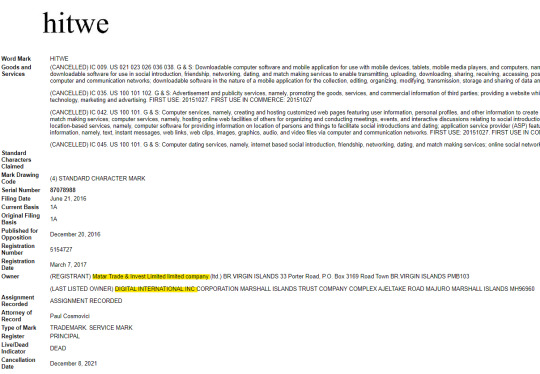
“Matar Trade & Invest Ltd.” This company has other similar “dating” and “marketing” companies linked to it, and is owned by “Vladimir Mnogoletniy”, a Citizen of Russia, who has lived in Ukraine for over 10 years and his runs his businesses there, but interestingly does not seem to have officially moved there, and maintains his Russian Citizenship as his only one.
He is also the CEO or a major of many other companies, the main one being “Genesis”, the company behind a controversial fitness app “BetterMe”, which has been shown to aggressively sell user data to less-than-reputable ad companies and affiliates, as well as being used to redirect money from scam dating sites and lessen the impact of credit card chargebacks from those sites [See footnote 1]
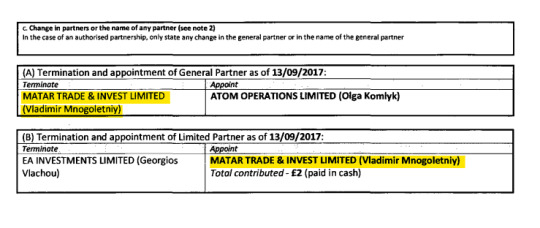
What makes him a particularly interesting individual is that his father, who is a Captain of the Second Rank in the Russian Navy, is doing security work for “Sevmash” - A Russian shipbuilding company, the only one that is making nuclear submarines in Russia. He also co-authored a research paper that talks about “Military Counterintelligence activities”, The other author of said paper is an FSB officer.[See footnote 2]
Sources and footnotes:
Footnote 1: “BetterMe steals traffic” - Article by SH[IT]HAPPENS on Medium
Footnote 2: “Why don’t I no longer shake hands with Vladimir Mnogoletniy.“ - Article by SH[IT]HAPPENS on Medium
Tangent: one of the other companies that I came across that seems to be working with Mirelia is “Traffichunt”, which seems to be one of the companies selling bot spam advertisements as well.

Another interesting thing is that the lawyer who filed for most of the trademarks, has quite a repertoire of similar trademarks under his belt:

Most of these seem to have been rejected because the address he listed in the applications does not exist
If you read all the way to here, thank you and I hope that bot’s never bother you again.
#spam bots#deep dive#osint#spam#research#i hope i dont get merc'd#tumblr bots#please read#bots#spammers#opsec#phishing#cybersecurity#sex bots#fake accounts#long reads
900 notes
·
View notes
Text
Ukraine’s daring attack on a major Russian warship in occupied Crimea in the small hours of Dec. 26 was one more episode in Kyiv’s strategy to deny Russia control over the Black Sea. With most of its ships driven out of its home port in Sevastopol, the Russian Black Sea Fleet can no longer find safe haven anywhere along the Crimean Peninsula. All ports there are now vulnerable to attack.
The Institute for the Study of War tells the story with data, showing that Sevastopol saw a steady decline in the number of Russian naval vessels in port between June and December 2023; by contrast, Novorossiysk on the Russian mainland farther east showed a steady gain. While Russia has been going all-out to attack Ukraine’s infrastructure, its risky move to deploy ships and submarines armed with Kalibr missiles in the Black Sea is exposing them to potential Ukrainian attack. It is a tacit acknowledgment that Russia can no longer depend on Crimean ports and launch sites.
Ukraine’s success has been due to domestically produced missiles and drones, sometimes launched using Zodiac boats or jet skis. But its most potent attacks have come from the air, where Ukraine has used its Soviet-era fighter aircraft to launch both domestically produced and NATO-supplied missiles. These attacks have taken place with the protection of Ukraine’s advanced air defenses—including newly supplied foreign ones—which are regularly shooting down the majority of Russian missiles and drones destined for Ukrainian targets.
Ukraine thus has made significant strides denying Russia control of both the sea and airspace over and around its territory, thereby preventing the Russian Navy and Air Force from operating with impunity. But is that enough for Kyiv to win? To many Western observers, victory doesn’t seem possible in the face of wave after wave of Russian troops grinding down Ukrainian defenders. Ukraine’s strategy to deny Russia free use of its sea and airspace may be working, but as things stand, it cannot defeat the Russian army on the ground, nor can it defend against every missile striking civilian targets.
Indeed, the current conventional wisdom in large parts of the West is that Ukraine is losing the ground war, leaving no pathway to victory for the country as Russia pounds Ukrainian civilians into submission. Kyiv might as well call for a cease-fire and sue for peace.
The trouble with this scenario is that it spells defeat not only for Ukraine, but also for the United States and its allies in Europe and Asia. It would embolden both Russia and China to pursue their political, economic, and security objectives undeterred—including the seizure of new territory in Eastern Europe and Taiwan.
But is the conventional wisdom right—or does Ukraine’s clever success at sea and in the air suggest that a different outcome is possible? Perhaps the Russian army can be defeated by making use of Ukraine’s willingness to fight in new ways. If you asked a U.S. military professional, the key to dislodging the Russians is to subject them to relentless and accurate air attacks that are well synchronized with the maneuver of combined arms forces on the ground. While the Ukrainians are admirably using the weapons at hand to strike Russian forces both strategically, as in Crimea, and operationally, as in hitting command and logistics targets, success at the tactical level has remained elusive. To achieve a tactical breakthrough on the ground front that leads to operational and strategic success, they will need to be more effective from the air.
For power from the air to be decisive in 2024, the Ukrainian Armed Forces must create temporary windows of localized air superiority in which to mass firepower and maneuver forces. Given the Ukrainians’ success in denying their airspace to Russia at points of their choosing, such windows are possible using the assets they already have at hand. More and better weapons tailored to this scenario would make them more successful across the entire front with Russia.
Gen. Valery Zaluzhny, the commander of the Ukrainian Armed Forces, acknowledges that to break out of the current positional stalemate—which favors Russia—and return to maneuver warfare, where Ukraine has an advantage, Ukrainian forces need air superiority, the ability to breach mine obstacles, better counter-battery capability, and more assets for electronic warfare. Specifically, he argues for three key components. First, armed UAVs that use real-time reconnaissance to coordinate attacks with artillery (which could include properly armed Turkish-built TB2s, MQ-1C Gray Eagles, MQ-9 Reapers, or bespoke cheap and light UAVs capable of employing the necessary weapons). Second, armed UAVs to suppress enemy air defenses, as well as medium-range surface-to-air missile simulators to deter Russian pilots. And third, unmanned vehicles to breach and clear mines.
Although the technologies are new, this combination of capabilities recalls the method U.S. and allied NATO forces practiced during the Cold War in West Germany to confront numerically superior Warsaw Pact ground forces protected by layered air defenses. The Joint Air Attack Team (JAAT) was developed to synchronize attack helicopters, artillery, and close air support by fighter planes to ensure a constant barrage of the enemy in case of a ground force attack. Pooling NATO assets in this way was designed to give the alliance’s forces the mass, maneuverability, and flexibility needed to overcome superior numbers, avoid a war of attrition, and escape the type of bloody slugfest that characterizes the current stalemate in Ukraine.
In Ukraine’s case, a modernized JAAT would encompass, among many things, armed UAVs carrying Maverick and Hellfire missiles, loitering munitions, precision-guided artillery shells, and extended-range standoff missiles fired by aircraft. These systems would be coordinated in an electromagnetic environment shaped by Ukrainian operators to dominate the local airspace, saturate the battlefield with munitions, and clear mines to open the way for a ground assault. This updated JAAT—let’s call it electronic, or eJAAT—would create a bubble of localized air superiority that would advance as the combined arms force advances under the bubble’s protection.
Given Russia’s willingness to endure significant casualty rates, the eJAAT could be even more effective on defense: Massing firepower against advancing troops through an eJAAT might result in a stunning rout of the attackers, opening opportunities for Ukraine to strategically exploit the sudden change of fortunes.
Zaluzhny has made it publicly clear that “the decisive factor will be not a single new invention, but will come from combining all the technical solutions that already exist.” Like all good commanders, Zaluzhny is painfully aware that the 2023 campaign didn’t work as well as he had intended. Even so, and to their advantage, the Ukrainians have clearly demonstrated their innovative talents, willingness to exploit Western methods, and total commitment to victory. U.S. and European assistance to work with them on how to better manage operational complexity and combine technology, information, and tactics in more dynamic ways, coupled with security assistance tailored to the eJAAT approach, would return movement to the now-static battlefield and give Ukraine a fighting chance.
If Ukraine can achieve the momentum in the ground war that evaded it during its failed summer offensive, Kyiv will have a real pathway to victory. That pathway will run through Ukraine’s demonstrated prowess at sea and in the air, joined to an embrace of a sophisticated combination of techniques on the ground. It will be a pathway to victory not only for Ukraine, but also for the United States and its allies.
82 notes
·
View notes
Text
Undersea sensors off the coast of northern Norway that are able to collect data about passing submarines, among other things, have been knocked out, the country’s state-operated Institute of Marine Research, or IMR, has revealed. The cause of the damage is unknown, but the cables linking the sensor nodes to control stations ashore are said to have been cut and then disappeared. This has raised suspicions about deliberate sabotage, possibly carried out by the Russian government, which definitely has the means to do so.
The IMR, one of the biggest marine research institutes in Europe, described “extensive damage” to the outer areas of the Lofoten-Vesterålen (LoVe) Ocean Observatory, putting the system offline. LoVe, which was only declared fully operational in August 2020, consists of a network of underwater cables and sensors located on the Norwegian Continental Shelf, an area of strategic interest for both Norway and Russia.
Norway’s military and the country’s national Police Security Service are reportedly investigating what happened to the research surveillance system. LoVe’s stated purpose is to use its sensors to monitor the effects of climate change, methane emissions, and fish stocks, providing scientists with a live feed of imagery, sound, and other data.
Norway’s military and the country’s national Police Security Service are reportedly investigating what happened to the research surveillance system. LoVe’s stated purpose is to use its sensors to monitor the effects of climate change, methane emissions, and fish stocks, providing scientists with a live feed of imagery, sound, and other data.
Of course, the system also monitors submarine activity in the area, so will immediately be of interest to the Russian Navy, in particular. Indeed, data gathered by its sensors is first sent to the Norwegian Defence Research Establishment, also known by its Norwegian acronym FFI, before being handed over to the IMR for further study. “FFI is believed to routinely remove traces of any submarine activity in the area before turning over the observatory’s data to IMR so that it only contains fishing, currents, and climate information,” according to a report from Norway’s News in English website.
Based on reports in the Dagens Næringsliv, the LoVe observatory has been affected by interference since at least April, when the connection between the sensor network and the control station at Hovden on the northern island of Langøya was lost. An unmanned submarine subsequently traced the cause of the breakdown to one of the underwater surveillance platforms, Node 2, which had been dragged away from its normal location with its connecting cable severed and removed.
Rogne told Dagens Næringsliv that the size and weight of the cable running between Nodes 2 and 3 was so great it would have required something with considerable power to have severed it.
IMR’s Øystein Brun told the same newspaper that the institute was now assessing whether the cables were cut deliberately, but suggested that seems the most likely explanation since the crew of a vessel should have noticed if they had accidentally become entangled with them and would likely have reported it.
It’s also unclear what has happened to the missing cable, around 9.5 tons in all, which has not been recovered.
17 notes
·
View notes
Text
Leaked documents indicate Russia's threshold for employing tactical nuclear weapons is significantly lower than previously thought, according to a new report. The Russian Navy losing a fifth of its ballistic missile submarines or even three cruisers might be enough to trigger such a response. The documents also point to continued Russian planning around a potential conflict with China, despite the strengthening of relations between the two countries in recent decades.
I feel 3 Russian cruisers could just catch fire and sink on their own.
25 notes
·
View notes
Text
Today's problematic ships are Minsk and Rostov na Donu (B-237)
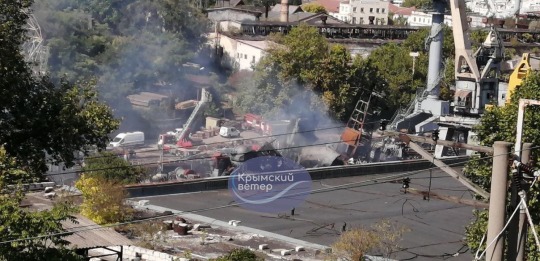


Minsk and Rostov na Donu (B-237) were a Ropucha-class landing ship and an Improved Kilo-class diesel-electric attack submarine, respectively, of the Russian Navy. Both were used in the Russian war in Ukraine (2022--present). The Rostov-na-Donu was capable of launching Kalibr cruise missiles, which Russia has used on numerous occasions to strike civilian targets in Ukraine.
In early September 2023 both the Minsk and the Rostov na Donu were in dry docks at a naval facility near Sevastopol, Crimea. Around 2 am local time on September 13, the armed forces of Ukraine helped both Russian warships go fuck themselves. A strike was carried out with underwater drones and UK-supplied Storm Shadow cruise missiles.
Satellite and ground photos taken later show catastrophic damage to both the Minsk and the Rostov na Donu. The latter has likely had its pressure hull breached in multiple places. They are the most significant losses taken by the Black Sea Fleet since the April 2022 sinking of its flagship, the Moskva.
In addition, having to repair any damage to the dry docks and remove the wrecks from them will impair the support and maintenance capabilities of the Black Sea Fleet.
36 notes
·
View notes
Text
The World Is Astounded by New Japanese-Made Fighter Jets

Japanese FX Fighter Jet must be capable of carrying more air-to-air missiles than the current Lockheed Martin F-35. The presence of external weapons has a significant impact on the radar signature produced by an aircraft.
The U.S. Air Force is purchasing upgraded Boeing F-15EXs in parallel with their ongoing purchases of F/35s. Japan has around 200 older F-15Js in its inventory. Lockheed Martin is working to increase the number of missiles that can be carried by the F-35. This would combine the airframe of the F22 stealth fighter with sensors and electronics from the F35.
#worldwarfighterplanes#uk6thgenerationfighterjetsshocktheworld#japanesefxfighter#theworld#technology#science#autos#flyingmotorcycle#nato#norman nato#natolesims#nato expansion#royal navy scrambles submarine hunter warship to intercept russian vessels in north sea as putin taunts nato#natok#kremlin#russia#putin#vladimir putin#ukraine#fighter jet
1 note
·
View note
Text
Britain’s nuclear submarine engineers use software that was designed in Russia and Belarus, in contravention of Ministry of Defence rules, The Telegraph can reveal.
The software should have been created by UK-based staff with security clearance, but its design was partially outsourced to developers in Siberia and Minsk, the capital of Belarus.
There are fears that the code built by the Russian and Belarussian developers could be exploited to reveal the location of Britain’s submarines.
The Telegraph understands that the MoD considered the security breach a serious threat to UK defence and launched an investigation.
The inquiry discovered that the firm that outsourced the work – on a staff intranet for nuclear submarine engineers – to Russia and Belarus initially kept it secret and discussed whether it could disguise where the workers were based by giving them fake names of dead British people.
As well as the UK’s submarine fleet, there are fears that further defence capabilities could have been compromised because it has emerged that a previous project was also outsourced to developers in Minsk.
National security in jeopardy
On Friday, experts warned that the UK’s national security could have been jeopardised if personal details of those with classified knowledge of Britain’s nuclear submarine fleet fell into the wrong hands, leaving them exposed to blackmail or targeted attacks.
Ben Wallace, the former defence secretary, said the breach “potentially left us vulnerable to the undermining of our national security”. He added: “Time and time again, countries like China and Russia have targeted the supply chains of our defence contractors. This is not a new phenomenon.”
James Cartlidge, the shadow defence secretary, said it was an “absolute imperative” to ensure “our most sensitive defence programmes have total resilience and security”.
Rolls-Royce Submarines, which powers the UK’s nuclear submarine fleet on behalf of the Royal Navy, wanted to upgrade its staff intranet and had subcontracted the work to WM Reply, a digital consultancy firm.
WM Reply then used developers based in Belarus – Russia’s closest ally – one of whom was actually working from home in Tomsk, Siberia, according to documents submitted to the MoD’s inquiry.
continue reading
This happened under the Tories, no doubt a product of austerity and the drive to acquire things as cheaply as possible.
You couldn't make this shit up.
6 notes
·
View notes